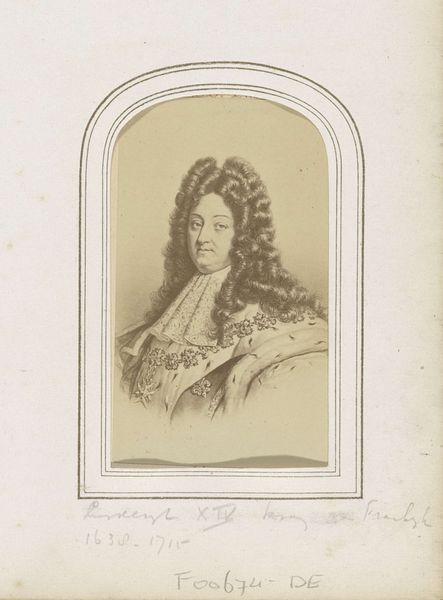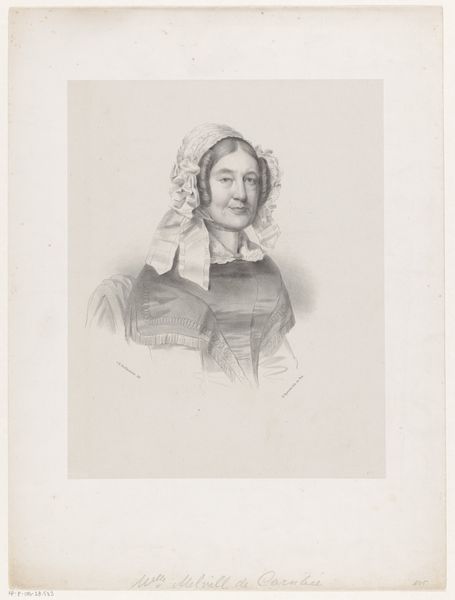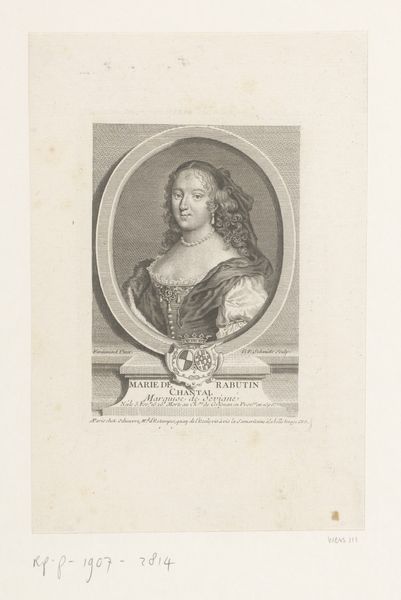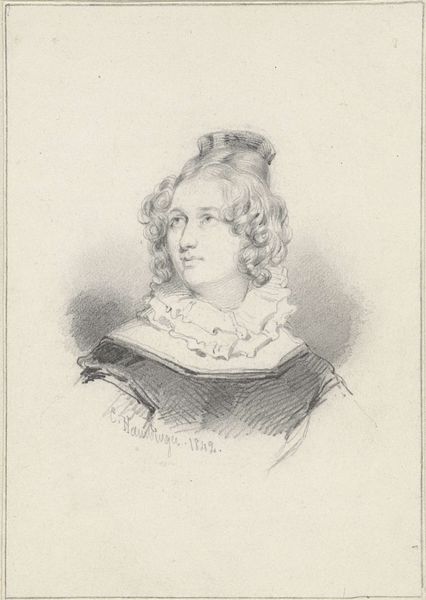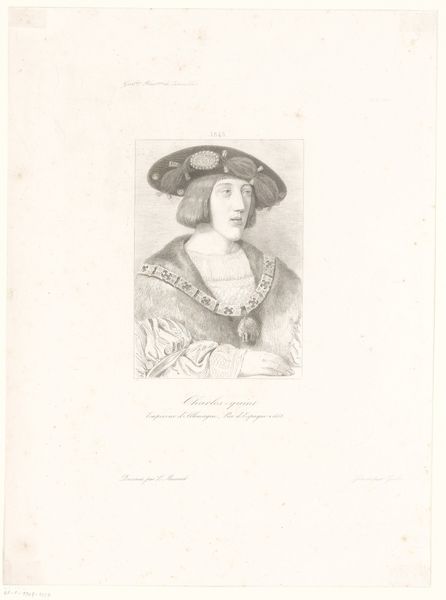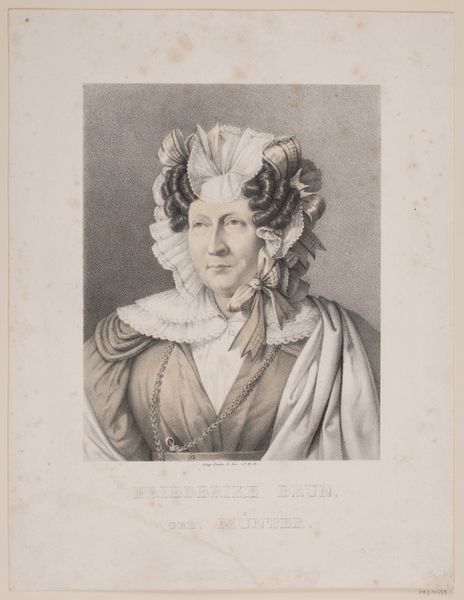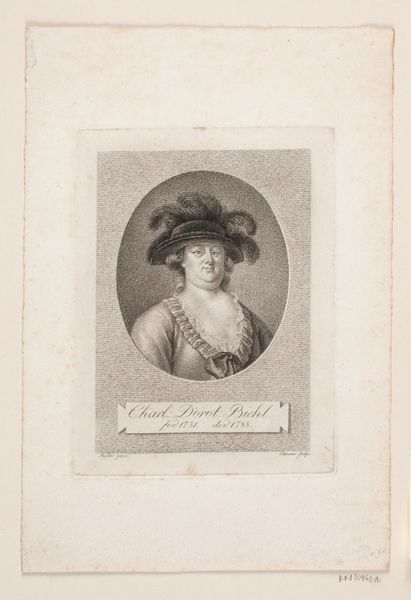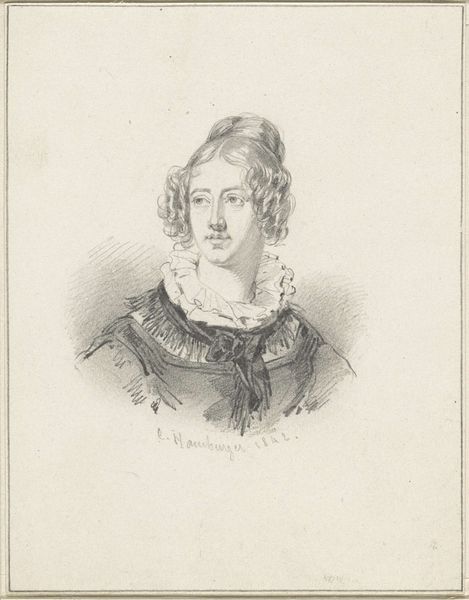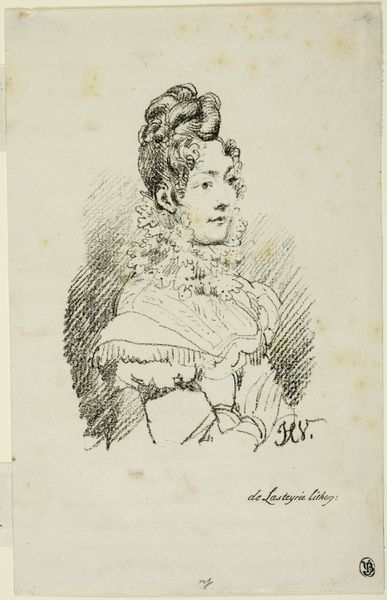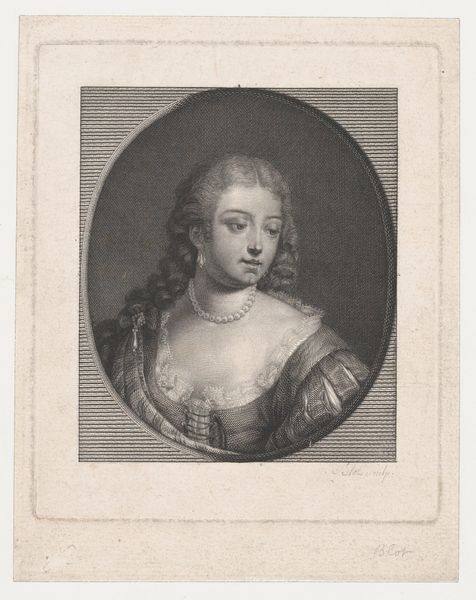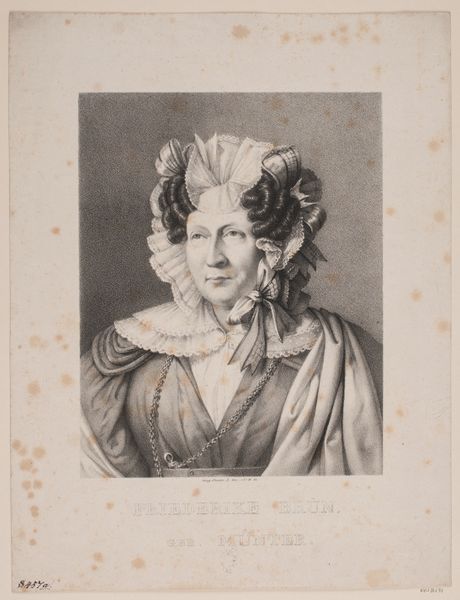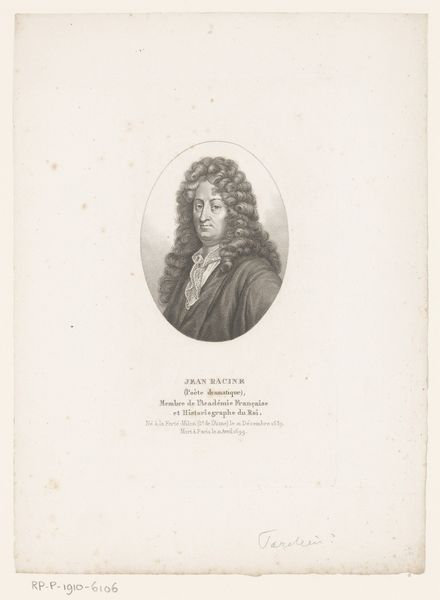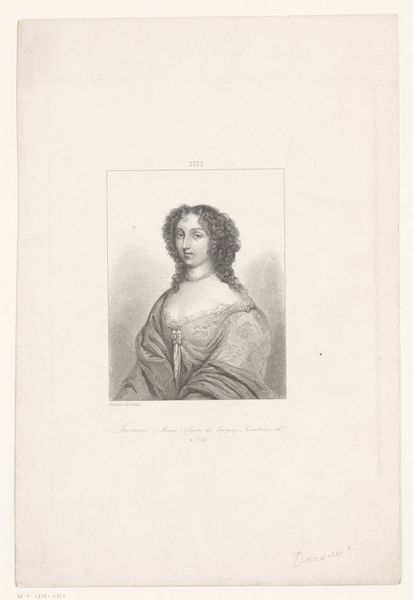
#
portrait
# print
#
realism
Dimensions: 189 mm (height) x 134 mm (width) (bladmaal)
This print of Leonora Christina Ulfeldt was made by H.P. Hansen in the 19th century, using a technique that was already well-established by then: engraving. Look closely, and you'll see how the image emerges from a dense network of tiny lines. The engraver would have used a tool called a burin to physically cut these lines into a metal plate, a laborious task, demanding great precision. The plate is then inked, and the surface wiped clean, leaving ink only in the engraved lines. Paper is then pressed against the plate, transferring the image. Prints like this one allowed for the widespread circulation of images, democratizing access to portraiture. Consider the amount of labor involved in the production process, from the engraver's skill to the printing itself. This reveals how technological advancements, rooted in craft, were crucial for social and cultural dissemination. By focusing on the materials and processes of printmaking, we gain a richer understanding of its historical significance, blurring the boundaries between art, craft, and industry.
Comments
No comments
Be the first to comment and join the conversation on the ultimate creative platform.
